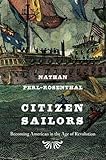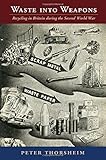Support H-Net | Buy Books Here | Help Support the NBN and NBN en Español on Patreon | Visit New Books Network en Español!
- African Studies
- African American Studies
- American Politics
- American Studies
- American South
- American West
- Asian American Studies
- Australian and New Zealand Studies
- British Studies
- Canadian Studies
- Caribbean Studies
- Central Asian Studies
- Chinese Studies
- East Asian Studies
- Eastern European Studies
- European Politics
- French Studies
- German Studies
- Iberian Studies
- India Studies
- Indian Ocean World
- Iranian Studies
- Irish Studies
- Israel Studies
- Italian Studies
- Japanese Studies
- Korean Studies
- Latino Studies
- Latin American Studies
- Mexican Studies
- Middle Eastern Studies
- Native American Studies
- Pacific Studies
- Polish Studies
- Russian and Eurasian Studies
- Southeast Asian Studies
- South Asian Studies
- Turkish Studies
- Ukrainian Studies
- Western European Studies
- World Affairs
- Animal Studies
- Anthropology
- Archaeology
- Business, Management, and Marketing
- Media
- Critical Theory
- Disability Studies
- Drugs, Addiction and Recovery
- Education
- Economics
- Finance
- Geography
- Gender Studies
- Genocide Studies
- Higher Education
- Human Rights
- Journalism
- Language
- Law
- LGBTQ+ Studies
- National Security
- Philanthropy
- Philosophy
- Policing, Incarceration, and Reform
- Political Science
- Politics & Polemics
- Public Policy
- Sex, Sexuality, and Sex Work
- Sociology
- Sound Studies
- Sports
- Urban Studies
- Big Ideas
- Celebration Studies
- Co-Authored
- Cover Story
- Historical Materialism
- History Ex Silo
- Interpretive Political and Social Science
- Invested Investor
- Landscape Architecture
- Late Antiquity
- Mormonism
- NBN Book of the Day
- NBN Seminar
- Postscript: Conversations on Politics and Political Science
- Practical History
- Preparing for Life After Grad School
- Psychology and Climate Change
- Syriac Studies
- The Chair: In The Room at the Fed
- New Books with Miranda Melcher

Feb 24, 2016
Ataturk in the Nazi Imagination
Summary
In Ataturk in the Nazi Imagination (Harvard University Press, 2014), historian Stefan Ihrig examines the history of Mustafa Kemal and Republican Turkey through the interpretive lens of Nazi political discourse. Ihrig shows how Ataturk's Turkey became a symbol of resistance and national rebirth in the interwar period. Challenging semi-colonial or orientalist visions of Turkey held by British and French, German nationalists saw many of their own aspirations play out in Anatolia after World War I. Ataturk's struggle against the Entente and the Greek Army became an inspiration for the right-wing press, initially overshadowing early fascist leaders like Benito Mussolini
Ataturk's Turkey became model of governance not only to be praised by the Nazi elite, but to be emulated German state. Nazi leaders borrowed liberally from Ataturk's example, citing "Turkish lessons for Germany" in the right-wing press. Hitler described Ataturk as his own "star in the darkness" during his years of imprisonment and political isolation during the 1920s. Ataturk's dictatorship paved the way for the Nazis twisted visions of national progress, authority, and modernity. The ethnic cleansing of Armenians and Greeks mirrored the Nazi party's own view of Jews as a dangerous enemy within. Ihrig shows how the Nazi vision of Ataturk (albeit not the reality) inspired Hitler's foreign and domestic policy in the years leading up to the World War II.


































































































